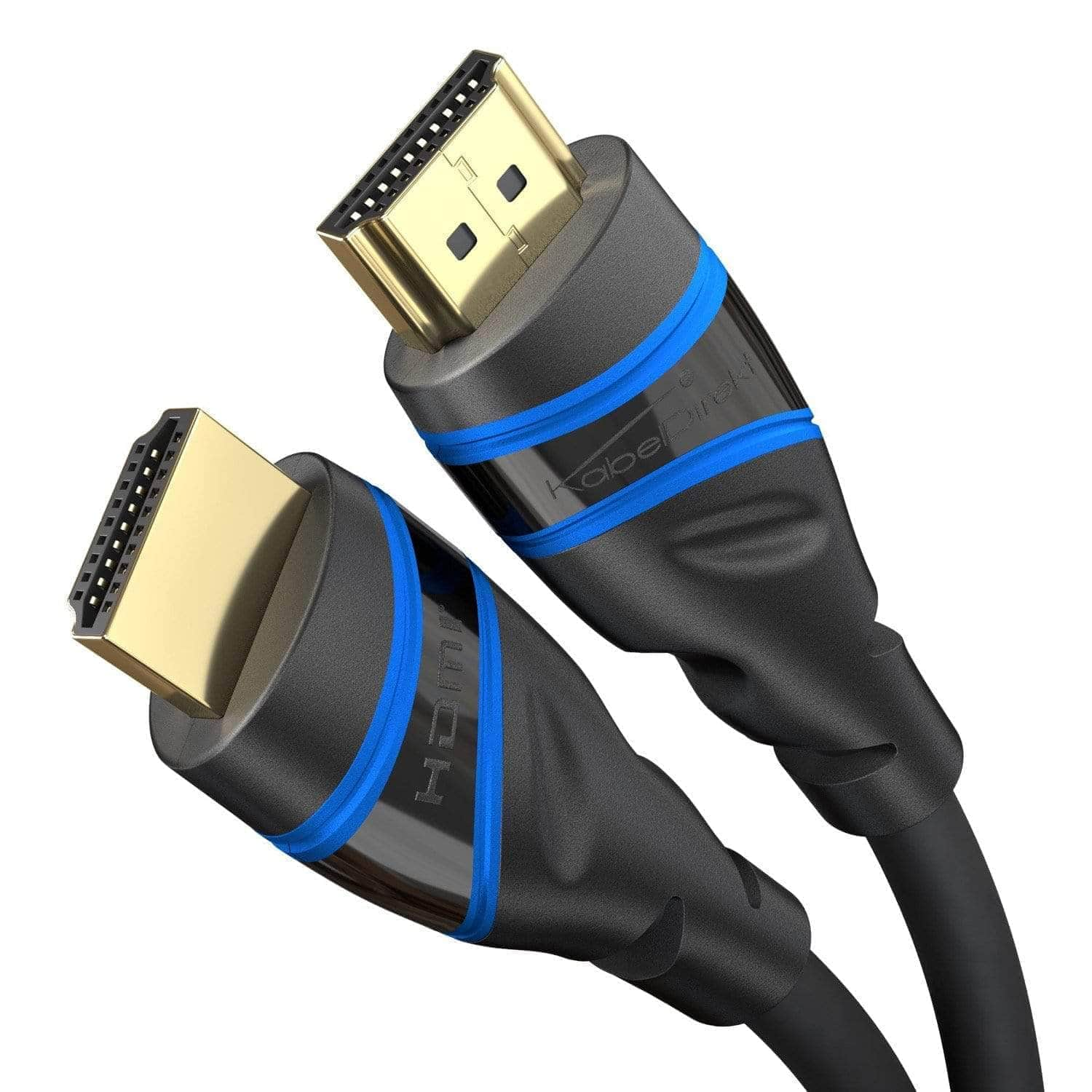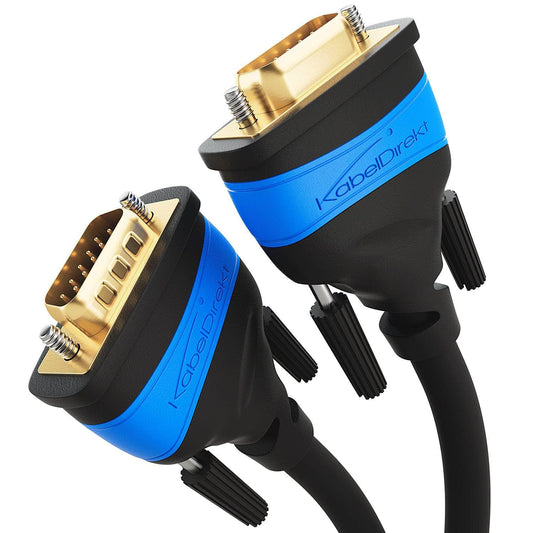-
{# Optional: Hier war bei dir ein zusätzlicher Titelblock; den habe ich entfernt, damit der Titel nur einmal erscheint. #}
Collection: VGA cables
VGA cables: The classic among video cables
HDMI and DisplayPort set the current standard when it comes to transmitting video from one device to another. VGA used to fill that role, at least on the PC. It all began in 1987, when IBM introduced the Video Graphics Array – a standard that would rule for years to come. There was no disputing it: Computers/PCs and monitors were connected to each other via VGA.
The technology is long since past its heyday. Other connectors have had their day too, such as between the transition from VGA to HDMI/DisplayPort when DVI was the best option for connecting computers to displays. But that doesn’t mean that VGA is just a relic from the last century that can only be found in technology museums. There is still a need for VGA cables. Read on to learn why.
Buy VGA cables from KabelDirekt
You can buy VGA cables from us in a range of lengths between 0.5m and 10m. You can use these cables to connect computers to old CRT, LCD, and TFT monitors as well as to TVs and projectors. VGA cables support low resolutions like 800 × 600 (SVGA (Super VGA)) and 1024 × 768 (XGA) as well as 1920 × 1080 (Full HD) and even 2560 × 1600 (WQXGA). In addition, they remain securely connected thanks to the screw connections on the sides, which ensure that the VGA plug doesn’t fall out of the socket or wobble around, causing a loose connection.
Switch from HDMI/DisplayPort/USB-C to VGA with an adapter
If you want to use an older monitor that’s still connected via VGA, but your computer doesn’t have a VGA connector but instead has a modern HDMI and/or DisplayPort connector, you’ll need an adapter. You can get one for either scenario. An HDMI or DisplayPort to VGA adapter cable allows you to continue using your old screen even though VGA interfaces are no longer an option with modern graphics cards. The same applies if you have an older projector but your DVD player was made long after VGA was at its peak and therefore only has newer interfaces.
We also sell USB-C to VGA adapters. They allow you to connect your laptop or MacBook with a Thunderbolt 3 connector to an old screen or projector.
VGA cable FAQs
Can a VGA cable support 1080p?
You may think that 1080p is too modern for VGA technology, but in fact VGA cables support a resolution of 1920 × 1080 pixels – and that’s not even the maximum. VGA can even transmit video at 2560 × 1600, as long as both connected devices support this.
Can I also transmit audio with VGA?
No, a VGA cable can only carry analog video. You’ll need an additional cable for the audio.
What types of VGA connector are there?
The family of VGA connectors is small. For example, while there are several types of DVI, between which there are also technical differences, just two VGA connectors matter for home users: The standard variant, with a D-sub connector with 15 pins or sockets divided into three rows, and mini-VGA. There are no technical differences between them. The mini variant is simply a (very rare) more compact form designed for laptops. Apart from that, there is the striking 13W3 connector, which is wider than its D-sub counterpart and has better shielding.
Can I connect VGA to HDMI?
Yes, you can with an adapter. There are even adapters that not only have a VGA and HDMI input but also one for audio signals. VGA cannot transfer audio, but HDMI can. So if you want to output audio through your screen’s speakers, simply connect the converter to an audio output on your computer.
Which is better: VGA or HDMI?
HDMI is the more advanced technology. Especially the newer specifications, which are far superior to VGA. And it’s not just because they support higher resolutions like 4K. HDMI works completely digitally (and is therefore lossless) and can also carry audio, which analog VGA can’t. HDMI is therefore the first choice for modern PCs, with DisplayPort also recommended for gaming PCs and gaming monitors.

HDMI Cables
We offer HDMI cables in all versions, lengths, and materials. Our products are engineered in Germany and manufactured worldwide in licensed facilities.


